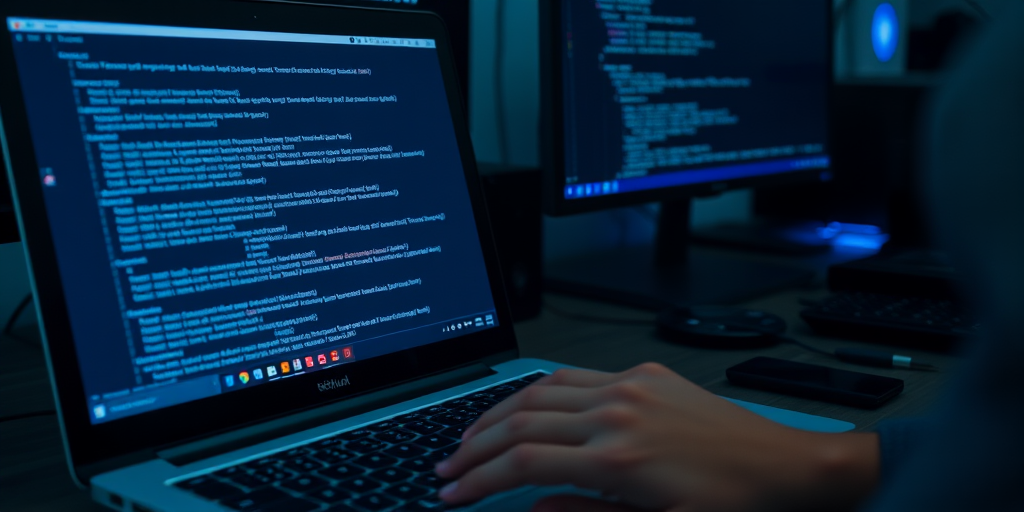Have you ever questioned why macOS should only run on Apple hardware? We believe that with the right mix of component compatibilities and strategic selection, building a Hackintosh becomes an achievable, even exhilarating, project. By meticulously verifying processor, graphics, and storage options, among others, we unlock a world where non-Apple laptops transform into capable macOS workstations. Our guide delves into comprehensive hardware compatibility considerations to ensure a smooth installation process. Let’s embark on this technical journey, balancing innovation with precision to redefine what’s possible in personal computing.
Building a Hackintosh: Essential Tools and macOS Installer Preparation
The DIY Mac build process relies on a precise set of tools that ensure the macOS installation proceeds without complications. We require seven specific components that work in tandem to create a reliable USB installer. Each file and tool serves a distinct function in the process, ranging from handling the macOS installation image to managing EFI partitions seamlessly. Below is a list detailing each essential tool and its purpose:
- SQL 15.3.1: Provides the macOS installation image required for the installer.
- Baler: A flashing tool used to write the macOS image onto the USB drive.
- Partition vizard tool: Mounts the EFI partition, ensuring proper disk handling.
- Explorer++: Manages file operations necessary for organizing installer files.
- Python-based BIOS generator: Creates fake system IDs to satisfy installation prerequisites.
- Property wizard: Sanitizes the config.p list file, thereby streamlining system configuration.
This curated inventory is fundamental for a successful build and must be paired with detailed command-line instructions like “list disk” and “select disk” when formatting the USB drive. In our safety and pre-installation checklist discussion, we emphasize verifying all tools are correctly configured and testing each component individually. Adhering to this pre-check strategy minimizes the likelihood of errors during installation and ensures that all system modifications comply with our established guidelines before initiating the macOS setup.
Configuring Bootloaders for Building a Hackintosh: Clover vs OpenCore

Bootloaders are critical components that instruct macOS on which drivers to load and how to manage the hardware interface. They parse the EFI partition, load necessary drivers, and relay custom parameters to ensure our system communicates effectively with macOS. Thorough configuration of bootloaders is indispensable to bridging the gap between diverse hardware profiles and stringent macOS requirements. Choosing between Clover and OpenCore becomes a matter of aligning system firmware and driver compatibility, where each option brings its own set of benefits and challenges.
Focusing on Clover, we perform detailed modifications to the config.p list file, inject fake serial numbers, and fine-tune boot parameters to optimize compatibility. Specific commands—like control shift R and control S in the property wizard—ensure that each EFI partition adjustment is applied accurately. Tuning Clover entails matching our configuration with the hardware profile, often employing a fake SMBIOS configuration based on Mac mini 8,1 for certain Intel mobile processors. The key differences between Clover and OpenCore configurations are summarized in the table below:
| Bootloader Type | Key Configuration Steps |
|---|---|
| Clover | Modify config.p list, inject fake serials using key combos, utilize fake SMBIOS |
| OpenCore | Establish kernel extension paths, set strict EFI parameters, adjust boot paths |
This detailed Clover setup provides a robust foundation for macOS boot management while addressing legacy hardware quirks.
For OpenCore, configuration demands precise EFI partition tuning, rigorous kernel extension management, and detailed adjustments to boot paths. We carefully set up platform definitions to match our hardware, ensuring that every modification—from driver paths to serial number injections—is verified against our system’s requirements. Advanced troubleshooting with OpenCore often involves iterative test boots and real-time diagnostics to catch misconfigurations early. Our methodical approach, underpinned by community-tested guides, enables us to resolve issues efficiently and achieve a stable, responsive Hackintosh environment that meets the high standards of macOS compatibility.
Post-Installation Tweaks and Troubleshooting for Your Hackintosh Setup

After installing macOS on non-Apple laptops, it is essential to implement post-install adjustments that enhance system performance and ensure full hardware functionality. We begin by transferring the bootloader to the system drive, which guarantees consistent system booting. In parallel, installing additional drivers and kexts is crucial for managing system components such as audio, network, and graphics. Efficient kernel extension management and precise driver installation are non-negotiable for eliminating conflicts and maintaining a responsive Hackintosh system.
Once the bootloader transfer is successfully complete, we focus on fine-tuning system configuration files for stability enhancement. This phase involves modifying EFI partitions and tweaking system parameters to optimize power management, Wi-Fi, Bluetooth, and USB port mapping. By refining these settings, we ensure that macOS can effectively interface with non-standard hardware. These adjustments also mitigate common issues arising from misconfigured bootloaders and incomplete driver setups, ultimately bolstering overall system robustness.
For persistent issues, we employ expert troubleshooting tactics that have proven effective in diagnosing and resolving boot failures, kernel panics, and peripheral miscommunications. When encountering unexpected behavior, it is advisable to adopt a systematic approach including booting in safe mode and analyzing log files for error messages. A focused troubleshooting strategy may include the following steps:
- Verify bootloader configurations and reapply necessary updates
- Reassess kext installations and check for version mismatches
- Ensure proper mapping of USB ports and peripheral connectivity
- Reconfigure EFI partitions when encountering persistent boot failures
Implementing these expert tips and consulting community forums for additional insights can lead to a more resilient and optimized Hackintosh system.
Final Words
in the action, we examined hardware selection, tool preparation, bootable USB creation, bootloader configuration, and BIOS/UEFI adjustments.
We outlined clear steps for each phase, emphasizing component compatibility and precise command sequences.
Every section offered technical insights and troubleshooting strategies, underscoring the importance of community resources and legal considerations.
By following these detailed steps, we empower you to start Building a Hackintosh: Installing macOS on Non-Apple Laptops with confidence and technical accuracy.
Let us move forward with optimism and a commitment to innovation.
FAQ
Q: Can you install macOS on a non-Apple laptop?
A: Yes, you can install macOS on non-Apple laptops through a process called Hackintosh. This requires compatible hardware components and specialized bootloaders like OpenCore or Clover.
Q: Is hackintosh identical to genuine macOS?
A: Hackintosh runs genuine macOS software but on non-Apple hardware. While functionality is similar, some features may require additional configuration or may not work perfectly.
Q: What hardware components are essential for a Hackintosh?
A: A compatible Intel processor (preferably 10th gen or earlier), supported graphics card (AMD or specific NVIDIA models), and hardware that matches existing Mac products are crucial.
Q: What tools are needed to create a Hackintosh?
A: Essential tools include a USB drive (16GB minimum), macOS installer, bootloader software (OpenCore/Clover), and configuration tools for BIOS settings and system parameters.
Q: How long does the Hackintosh installation process take?
A: The complete Hackintosh installation typically takes 2-4 hours, including hardware compatibility checks, bootloader configuration, and system optimization.
Q: What are common challenges with Hackintosh builds?
A: Major challenges include hardware compatibility issues, bootloader configuration complexities, and potential system updates breaking functionality. Community resources provide solutions.
Q: How reliable is a Hackintosh for daily use?
A: When built with compatible hardware and properly configured, a Hackintosh can be stable for daily use. Regular maintenance and careful system updates are necessary.
Q: What’s the difference between Clover and OpenCore bootloaders?
A: OpenCore offers better security and stability but requires more technical knowledge. Clover is user-friendly but less maintained. Both enable macOS booting on non-Apple hardware.



